#Hiragana and Katakana Guide
Explore tagged Tumblr posts
Text
3 Japanese Writing Systems: Kanji, Hiragana, Katakana
In this post , you will learn on 3 Japanese writing systems. Check out my japanese products [here]. The Japanese writing system is a fascinating and complex blend of different scripts that evolved over centuries. For anyone looking to learn Japanese, understanding these scripts is essential. This post delves into the intricacies of the Japanese writing system, exploring its history, structure,…
#Effective Japanese Learning#Hiragana and Katakana Guide#japan#japanese#Japanese Language Alphabet#Japanese Language Tips#Japanese Script Differences#Japanese Writing for English Speakers#Japanese Writing System#Japanese Writing System History#kanji#Kanji Characters Explained#Katakana for Beginners#language#language-learning#Learn Hiragana#Mastering Japanese Scripts#Understanding Kanji
4 notes
·
View notes
Text
is this a pun??? (aka Dolphin doesn't know how to read japanese)
ok i'm going to reveal myself now as an absolute monolingual ignoramus on a site full of people who fluently speak japanese but i think i might have accidentally taught myself something whilst translating the graces perfect guide and it's making me weirdly happy so allow me to be a language-acquiring toddler for a moment and overexplain what happened tonight:
so from the beginning of this translation project i was noticing some inconsistencies in how Google Translate approached the word used to describe Ephinea in relation to Fodra. "Star" is the english word it goes for the most, but sometimes satellite which seems more correct, and this bothered me because, well, Ephinea's not a star?? Not by scientific definitions anyway, I know this is a fantasy world but you can't live on a star, it's gas. But I chalked it up to odd translation quirks and moved on, until I accidentally got a few different translated lines thanks to part of the text being cut off the first time: "A satellite of the planet Fódlan" vs "Mamoru of Planet Fódlan" vs. "guard of the planet Fodlan." The original text is, I believe, エフィネア 【[ 文 明 ・ 文 化 】 惑星 フォ ドラの衛. Anyone who can read this probably can tell exactly where I'm going but I had to learn this so please be nice to me ;_;
The romaji caught my attention here because even with my limited knowledge I was like. wait a minute mamoru I know that word. A certain dumbass won't stop saying it. Is it possible that mamoru is somehow related to the word used to define Ephinea?? Is this a pun???? And upon some isolating of characters and a reference to JapanDict I learned 3 things:
The character 星 is the one google translate likes to define as "star."
The character 衛 is the one google translate told me was mamoru, and wouldn't translate it into "guard" until I allowed it to detect Chinese, so I assume that means it's kanji? (I'm sorry I know fuck all about reading in Japanese). By itself it didn't show up in JapanDict.
But you know what DID show up? 衛星, translated to satellite or moon. It seems the characters for "mamoru" and "star," when put together, become the word for the world of Ephinea, "satellite." The themes of the game are baked into the world itself ;_;
I had to stop myself here for a minute though because like I've said so much already, I don't know the first thing about how character based languages work. Maybe this isn't a big deal at all, maybe this is just equivalent to an ESL learner getting worked up about the morpheme "cat" existing inside the word "catastrophe" when the actual root and definition of that word has nothing to do with cats.
But the thing is, context matters??? If there was a story in which feline-based disasters were happening and it was being described as a catastrophe, that would almost certainly be intentional by the writers and immediately understood as a pun by fluent speakers, probably to their chagrin. But maybe to the ESL learner with juuuust enough knowledge to understand that there is a pun, it becomes immediately delightful.
Anyway, for now I'm gonna assume that this is intentional because it seems like there are many other words for "moon" or "satellite" in Japanese and they chose the one that uses 衛. Someone who actually knows anything feel free to correct me if I'm wrong, I'd really rather have my bubble burst but learn something than go around with false conclusions I made up because of confirmation bias and a foolish attempt at teaching myself a foreign language without any actual speakers around to consult.
But in conclusion,

#dolphin noises#graces perfect guide#please be nice to me i am starting from ground zero#i didn't even know the difference between kanji katakana and hiragana until tonight and im still not sure i quite get it#but it was fun to delve into and get my synapses going even though i also have a headache now
2 notes
·
View notes
Text
i think genuinely the proper nouns are the worst part of this whole massive project. its either like. the official english translations are inaccurate between material (i will NEVER not be a bit upset about lelie june's translations lol) or having to be the one to decide how to translate a certain thing INTO english. like i thankfully thought ahead to write the katakana down for each name i was unsure of but now i well. am going to have to pencil in a whole day to go and check what the kana actually mean and then make the decision of how to translate it. like obviously i could just take the kana at face value but sometimes it gets wonky. its a bit of a headache lol
#twist rambles#♟️#sorry i have been on the grind all DAY with volfoss and its been like. definitely a thing of ok starting 2 learn katakana is going to help#me to do before i finish the guide but its so scary for me bc it does add a bit of like. heres actual knowledge and i have to figure out ho#to incorportate that into the doc. its the same thing as trying to figure out how to localize certain things or learning oh heres x or y#cultural thing and i need to take an entire paragraph to explain this to ppl who prob dont care lol but i stay silly ok <3#the amt of time i have to like. copy paste the translation and check like 5 sources to make sure its accurate. its gonna become a LOT easie#when i learn hiragana and start on the scary kanji journey. but rn its so so terrifying for me bc like. the pressure of getting a#translation correct esp when the official eng translations are WONKY w spelling. so like... its kind of a thing where keeping the kana ther#is good but i also am like. hoping it wont be too annoying or intrusive in the guide. anyways its just 5 million translation burdens most o#the time lol. but i stay silly (and have to like talk it out a million times lol)
2 notes
·
View notes
Text
A Beginner’s Guide to Cracking the NAT N5 Japanese Exam in 2025
Learning Japanese has become more than just a hobby — it's a gateway to global opportunities. Whether you're planning to study in Japan, work with Japanese companies, or simply explore the language and culture, starting with the NAT N5 exam is a smart move.
The NAT Test (Japanese) is one of the most recognized language proficiency tests in Asia, and the N5 level is its entry point. It’s perfect for beginners who have just started their journey in learning hiragana, katakana, basic kanji, and simple grammar patterns.
📘 What Is NAT N5?
The NAT N5 exam is equivalent to the JLPT N5 and assesses your ability to understand basic Japanese used in everyday situations. The test format includes:
Language Knowledge (Vocabulary & Grammar)
Reading Comprehension
Listening Section
To succeed, you should be comfortable with basic sentence structures, numbers, directions, simple conversations, and around 100 kanji and 800 vocabulary words.
💡 Why Appear for NAT N5?
✔ Recognized by language schools & institutes
✔ Ideal for visa processing and Japanese courses
✔ Builds a strong foundation for N4 and beyond
✔ Boosts confidence in reading, writing, and listening
📝 How to Prepare for NAT N5
Start with Hiragana & Katakana: Master the two scripts early.
Use N5-Level Textbooks: Books like Minna no Nihongo or Genki I work well.
Focus on Listening: Watch Japanese videos with subtitles and practice with audio clips.
Take Practice Tests: Familiarize yourself with the exam structure and timing.
If you’re looking for a step-by-step roadmap, sample papers, preparation strategies, and syllabus details — don’t miss this in-depth NAT N5 Exam Guide. It’s a one-stop resource for beginners preparing for the test in 2025.
🏁 Final Thoughts
The NAT N5 exam may be the first step, but it's a powerful one. It helps you build confidence and motivates you to pursue higher levels like N4, N3, and beyond. With dedication and the right resources, you can achieve success and take your first steps toward fluency.
Start preparing today, and let your Japanese learning journey begin! 🇯🇵✨
#Japanese Language#NAT N5#NAT Test 2025#Learn Japanese#JLPT N5#Japanese Exam Guide#Study Japanese#Japanese Grammar#Language Learning#Japan Study Tips#Japanese Vocabulary#Hiragana Katakana#Japanese for Beginners#NAT Japanese Test
0 notes
Text
From Hiragana to Kanji: Understanding the Three Japanese Scripts
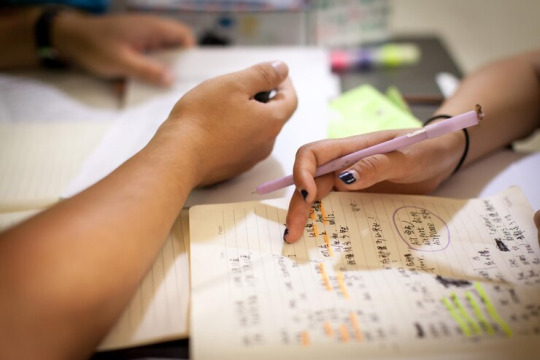
The beauty of the Japanese language lies not only in its sound but also in its writing system. If you’re just beginning your learning journey, you’ll quickly encounter one of the most unique aspects of the language—its use of three distinct Japanese scripts: Hiragana, Katakana, and Kanji. Understanding how these scripts work together is essential for reading, writing, and eventually speaking like a native.
1. Hiragana – The First Step
Hiragana is the most basic of the Japanese scripts and is usually the first one learners master. It consists of 46 characters, each representing a specific sound. Native Japanese words, particles, and grammatical endings are written in Hiragana. For example, “たべる” (taberu – to eat) and “わたし” (watashi – I) are written entirely in Hiragana. This script is essential for constructing basic sentences and learning verb conjugations.
2. Katakana – The Script of Foreign Words
Katakana is the second phonetic script in Japanese, also with 46 characters. It’s primarily used for writing foreign words, names, scientific terms, and emphasis. You’ll see it often in menus, advertisements, and pop culture. Words like “コーヒー” (koohii – coffee) and “ホテル” (hoteru – hotel) are written in Katakana. The characters are sharper and more angular than Hiragana, giving them a distinct appearance.
3. Kanji – The Ideographic Script
Kanji is the most complex part of the Japanese writing system. These characters were borrowed from Chinese and are used to represent entire words or ideas. Kanji are not phonetic—each character can have multiple readings depending on its context. For instance, the character “日” can be read as hi, bi, or nichi depending on usage. While there are thousands of Kanji, roughly 2,000 are commonly used in everyday Japanese. Learning Kanji adds depth and clarity to written text.
How to Learn the Japanese Scripts Effectively
At Japanese Language Classes, we help students master all three scripts through structured lessons, visual aids, interactive writing practice, and real-world reading material. We believe that learning Japanese scripts isn’t just about memorization—it’s about understanding the logic, beauty, and function behind them.
Whether you're aiming to pass the JLPT or simply want to read a Japanese novel, mastering the scripts is your first milestone. With the right support from Japanese Language Classes, you can read and write with confidence in no time.
#Japanese scripts#Hiragana#Katakana#Kanji#Japanese writing system#learn Japanese scripts#Japanese alphabet#Japanese for beginners#Japanese Language Classes#how to read Japanese#Japanese script guide#writing in Japanese#Japanese characters#study Japanese writing#JLPT preparation
0 notes
Text
one month into studying japanese and i have now finished reading the first panel of one piece :)
#spent like 2-3 weeks with hiragana and katakana#now i follow a study guide + learning from the words and phrases in one piece
1 note
·
View note
Text
SDC x Reader + Dios Minions : Learning their Language
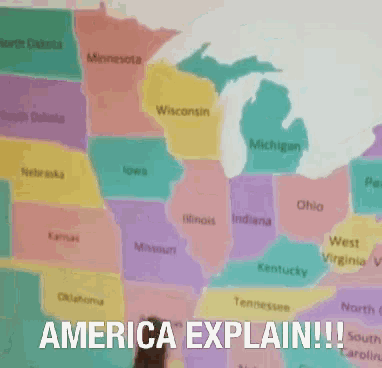
CW: Beryls Limited understanding of languages, Eclipse Mention, disability mention
Notes: FINALLY! I finished it! 😩 this took me literally months to do. Well…not really but personal stuff came up in between and I also had to get a new car and that was a nerve wracking experience so yeah… I’m still alive. I really hope you enjoy because I really took my time on this and did plenty of research for each one. Please enjoy! 💜 Beryl
Joseph - Standard American English & British English
You wanna learn English??? Oh boy! He’s gonna learn ya’ a thing or two about English. For starters, “learn ya a thing or two” isn’t proper English. This man isn’t proper either.
He's not the best teacher but if you don’t already know the Alphabet it might be worth memorizing beforehand. Because he’s going to show you the difference between American and UK English spelling. Which spelling is the correct way you ask?
“Don’t worry about it! Spell it anyway you want! If we can read it then it’s fine!”
Also don’t be discouraged by all the silent letters you come across in the English language. It’s tricky but once you pick up on the patterns in writing, it gets a little easier. And remember-Native English speakers struggle with reading too so don’t feel bad! You got this! Joseph believes in you! (& Beryl does too 💜)
His favorite way of integrating you into his language is by snuggling up with you and watching his favorite movies with subtitles so you can read along. Just don’t get too frustrated if he falls asleep when you try watching Lawrence of Arabia with him. It’s one of his favorites but he watched it a million times already!
Jotaro - Japanese
Yare yare daze. You want him to teach you Japanese? Do you know how much of pain in the ass that’s going to be? First you have to learn hiragana and then katakana…and don’t get him started on kanji. He’s flattered really, but he thinks this is going to be too much effort than it’s worth.
Don’t worry, that’s where Holly pops in! She’s going to give Jotaro an earful about how she learned Japanese from his father and that’s how they got closer and eventually married. She’s going to give you her (probably outdated) workbooks and translation guides, and dictionaries for you to learn from. (Isn’t she so sweet???🥹)
Ok—he finally gives in and help you learn Nihongo. He’s not gonna talk to you in your preferred language anymore. You’re going to have to decode and guess what he’s trying to say from now on. (So mean 😭) but he's not a complete ass. He will speak slowly and clearly to you so you can keep up.
He’ll point to things and tell want he wants through simple sentences: “I want you to give me… I want to drink … I want to eat … I want to read …”
Once you get a hang of the language a bit, he’ll want to go to the aquarium and have you interact with other Japanese speakers a bit. Don’t worry if you can’t figure out what you want to say, he’ll translate when you get a brain fart.
“Wakarimasu ka? (Do you understand?)”
Kakyoin- Japanese
You want to learn his language? He’s so flattered, he can’t help but blush! He’d love to teach you Japanese!
He’s not sure where to start first…of course you need to learn how to read. But he’s wondering if teaching through video games, manga, or anime would work the best. You should pick for him to help him not overthink it. 😅
He’ll try to teach you through a mix of genres like horror, comedy, drama, fantasy, etc. He wants to teach you about the specific humor Japan has that might go over your head, jokes, tongue twisters, and double entendres.
If you’re brave he’ll teach you about all the different yurei, oni, and yokai Japan has to offer.
You might want to have him slow down because he’s going to info dump on you so hard.
“Hold on a minute Y/N! You’re reading that manga backwards! You’re going to spoil the ending for yourself!”
Avdol- Masri(Egyptian Arabic) & Standard Arabic
You can see the fire in his eyes from excitement when he hears you say you want to learn Arabic. Now…you better be serious about learning this because he’s not going to let you back out just because you get a little intimidated by its difficulty level. He says if he can learn English, than he has no doubt in his heart that you can learn Arabic!
What he didn’t tell you though was… you’re actually learning 2 dialects at once. It’s very important for you to know Egyptian Arabic and Modern Standard Arabic. Egyptian Arabic is needed because that is what most people in Cairo speak. This form of Arabic will help you get to know the locals on a more personal level and get more used to the culture and customs. Modern Standard Arabic is used for formal settings and when you are writing. Speaking of writing��they read and write from right to left! But if you have a good understanding of Arabic writing, you probably already know that.
He’s going to really focus hard on your reading and writing. Al-abjadiyah is the Arabic alphabet and each letter changes form depending on where in the word it is! Don’t worry, he knows this is going to take a while. He’s going to take his time with you. Unlike Polnareff, he is patient.
“Pfft! Ahem, Remember: write right to left, Habibi/ti.”
Once you get used to the language a bit he’ll sit with you and read to you to help you understand the spelling of words and see the patterns of the letters in the different forms taking place in each word. …They’re definitely books for little children but you’ll be making it to more complicated wordy books soon enough!
Polnareff - French
You want to learn the language of love? There’s no better man to learn it from than this pervert romanticist! At least…that’s what he says. The guy is good at teaching but he’s impatient and fussy as hell! 😩 it’s almost as if learning a 2nd or 3rd language is hard! Who would have thought???
“Non non non! Parler français comme un vache espagnole!(your French is very broken!) Come on! You’re using the wrong gendered noun! No..I’m sorry but there’s no gender neutral version for house. Please don’t despair! You can use iel/yel but it might cause some confusion and you might have to use some explanation if someone doesn’t understand… or you could use flip flop between male and female nouns if that doesn’t cause you distress! If anyone has a problem, I’ll tell them “Je vais lui sonner les cloches!”(tell them to mind their own business!)”
Now as an English speaker, you are going to have to rewire your brain on how the Alphabet works because nearly half of the letters in French sound like they’re silent in English! 😰 But that’s okay! You have an enthusiastic but impatient teacher, Polnareff to guide you along the way! The best way to get you involved into the language is through the culture. And that’s through a wine and cheese tasting and then a visit to the very famous Louvre Museum. (This feels more like a date than an educational opportunity…)
Looking at the names of the bottles and how he pronounces the names will help you pick up on the consonants sound and hearing other civilians will help fine tune your own accent and pronunciation.
“Blanc Sauvignon? Did I say that right?”
“Haha—magnifique! you’re getting closer! Say it more with less emphasis on the V.”
Hol Horse- American English (southern)
You wanna learn American English? Well hold your horses, I’m fixin’ to teach you. Just give me a cotton pickin second! English is already a complicated language and we in the south like to make it even more complicated. What’s the most difficult southern saying? It’s “well bless your heart!” It’s usually used to be sassy, but it’s also used to show sympathy��so bless your hearts wisely.
It’s going to be best if you already have grasp of the bare basics of the English language if you ever want to understand whatever the hell Hol Horse is saying. But for you, he’ll take his sweet time and explain everything he means. ❤️
“Don’t take anything I say in English to heart baby girl/boy. You don’t understand something’ you let me know, ya hear?”
For starters, we don’t use proper grammar. Ain’t got no time for that. The best way to understand southern American English is through your stomach…at a family BBQ.
Don’t worry, he’ll make your plate. You might wanna tell him to take it easy, I don’t think that paper plate can handle all that food. 😅 you’re gonna be fuller than a tick! Also if someone offers you a coke, they’re gonna ask which one. Coke doesn’t mean just cola, just soda in general.
“It’s safe to eat funeral potatoes I swear! It has nothin to do with no funeral. It’s just hash brown casserole. It’s good! …I mean, it CAN be served at a funeral but you can have it at any time!”
Devo- Diné Bizaad(Navajo language)
You want to learn his language??? You’re going to melt this cold blooded killers heart!❤️ It’s a sad fact that his language is a dying one. No thanks to the European settlers, but that’s a story for another time. He wants to share all of the goodness of his culture with you and the language of his people-Diné Bizaad which means “people’s language”.
I hope you are serious about his language because it is the hardest language in the world to learn.
In all honesty, he doesn’t really expect you to be a fast learner. You are going to have 33 consonants and 12 vowels to memorize and make your mouth replicate.
He doesn’t want to scare you off so he’s going to start you off easy with simple words that are important to his culture. You’ll learn about the four sacred colors, native symbols, traditions, food, and artwork.
“It’s forbidden to look at a solar eclipse. We stay inside our hogans and sit in contemplation about the sun and moon. We believe the sun and moon are interacting with each other.”
Rubber Soul- Singlish (Singaporean English)
Shiok! Lucky for you in Singapore, there’s a medley of languages spoken there! This man is a complete dumbass but he knows Mandarin, Malay, and English. Singlish IS English but the only catch is, it features a beautiful but complex patchwork of languages featuring Malay, Mandarin, Cantonese, Hokkien, Tamil, and Teochew… So even if you are already an English speaker, you are in for an adventure!
He’s going to take you to hawker center and show you how to live like a true Singaporean! And first thing first is chope-ing. That’s probably the most important Singlish word you are ever going to hear. To chope is reserving a seat by setting your personal belongings down, like a handkerchief, a pack of tissues, or something bigger like a backpack. Low crime don’t mean no crime so don’t leave anything super important behind. Don’t worry about theft…Rubber Soul will be eager to give a back breaker to anyone who dares to try to steal your wallet. 😬
“Why does everyone talk like they’ve been google translated??? Pfft—don’t talk cock lah! That’s exactly what Singlish is. I told you that you weren’t going to understand it off the bat!”
Don’t try and argue with him on it. He’ll speak in complete Singlish and then not ask—but demand to repeat back what he just said in English. Only for him to laugh in your face. 😭
“Wah piang! So crowded! Where you want to makan? Chop chop—going to rain already! You go chope that table. Here have Indian, Thai, Sichuan, Malaysian, Indonesian, and Japanese. You want kopi ah? I SMS when ready. Ok—what did I just say?”
…
“Wah Lao eh?! I literally gave you the EASIEST Singlish phrases to translate! Man you are dumb—still love ya though!”
Steely Dan- Urdu
You wanna learn Urdu? Well of course you do! You might want to have an understanding of basic conversation in Urdu because he isn’t the best teacher despite how much boasts being otherwise. But he’s all smug and secretly giddy that you want to learn Urdu. If you know Arabic, you’re off to a good start! But you are going to have to rewire your brain to pronounce each letter differently and learn a few new ones.
“Of course you should learn my language! Do you know how much I go out of my way to communicate my love for you? Luckily for you I got top grades in writing and grammar in school so you have the best-most-handsome teacher ever.”
Oh boy, you have done it. You stroked his ego and now he’s going to non stop complimenting himself.
He’s going to expect lots of love letters in Urdu from you to him and vice versa. He’s going to have you read them aloud to him so he can hear his own flowery cheesy declarations of love for you. But tread carefully… he’s a grammar authoritarian and human spell checker! He’ll poke fun at your very hard attempts of writing this challenging language. (Just pretend to cry a bit or cry for real, he can’t stand crying and he’ll immediately start being much nicer)
“You call that Urdu?! Where’s your penmanship??? Those look like squiggly little worms!”
“Okay okay—don’t cry! I’m sorry ok?! I love you baby! I really mean it too! No more tears! I’ll help you rewrite your misspellings.”
N’Doul- Masri (Egyptian Arabic) and Arabic Braille*
He’s very flattered. He’d love to teach you, but due to his eyesight, he won’t be able to help you read but with his heightened sense of hearing he can really help you to pronounce everything correctly and get the accent right.
“Good effort, love. But you aren’t using your throat. You need to use your throat to pronounce the Al-Ahruf Al-Halqiyyah (6 throat letters). Try again. I know you can do it.”
Don’t worry about struggling. He understands what it’s like to struggle in life. He won’t baby you just like he expects you not to baby him because of his visual impairment. He’ll gently correct you each time you make a mistake.
—
Now if you’re blind too, or curious about a new way of reading, he’ll teach you Arabic Braille.
*Theres many different types of blindness and it doesn’t explicitly say what N’Doul has. But based off of his eyes and age he probably has congenital cataracts. This is just a HC. It’s all up to you!*
Now he can see just barely enough to guide your hand across the page to teach you each letter in braille. Braille in general is becoming used less and less so he is really intent on teaching you this important life skill as a visually impaired person. Interestingly enough, Arabic Braille is read left to right!
“I vaguely remember what Arabic script looked like before my sickness took away my vision. It used to feel strange reading from right to left and then left to right when I started learning Braille. It was a vast difference and took me a long time to learn. So please don’t worry if you struggle or make mistakes.”
With having you, Geb, and his heightened senses, he doesn’t really miss his vision. He just enjoys each passing moment with you, teaching you his language and sharing his culture
#jjba#jjba x reader#joseph joestar x reader#oldseph x reader#muhammad avdol x reader#polnareff x reader#noriaki kakyoin x reader#jotaro kujo x reader#jjba Devo#jjba steely Dan#jjba N’Doul#jjba rubber soul#jjba hol horse
68 notes
·
View notes
Photo

How to Read a Maya Glyph
For over three centuries, the ancient Maya flourished in Mesoamerica. They built giant stone pyramids surrounded by dense jungle, used a calendrical system that made many believe that 2012 would be the end of the world, and created a writing system that is as beautiful as it is complex. Its decipherment is ongoing, even today. In fact, it is so aesthetically rich and difficult to master, one needed to be an accomplished artist in order to write it properly. Fittingly, ancient Maya scribes and artists were all known by the same title: t'zib.
Deciphering Ancient Maya: Syllables & Concepts
The Maya writing system is logosyllabic, meaning its symbols can represent sounds in the form of syllables (like “ma” or “tot”), or they might represent whole concepts (like “river” or “house”). This made the language very difficult to decode, and in fact, scholars initially thought the entire writing system was phonetic due to the unfounded assumptions of a missionary named Diego de Landa. Originally from Spain, de Landa's first language was naturally Spanish. Therefore, when he attempted to decipher the Maya language, he broke it down into individual sounds (vowels and consonants) rather than syllables, the product of which is an inaccurate record of the Maya written and spoken language and a misleading guide for scholars. It wasn't until 1952 CE that it was suggested that the language might be syllabic rather than phonetic. This was a major breakthrough in the decipherment of the ancient Maya written language.
The distinction between a phonetic and a syllabic language is small but essential. A phonetic language uses individual sounds to build spoken words. English, German, and modern Romance languages like French, Italian, and Spanish are phonetic languages, to name a few. When written, each symbol (letter) represents a single sound (a vowel or consonant) like “o” or “b”. Syllabic languages, however, are made up of consonant-vowel (CV) or consonant-vowel-consonant (CVC) combinations, like “ta” or “bot.” Japanese, for example, uses the CV model for the majority of two of its alphabets: katakana and hiragana.
The Maya glyphs are further complicated by their use of conflation, wherein two or more glyphs are combined, and some elements of the glyphs are eliminated or simplified, diminishing their individual complexity in order to create a legible, aesthetically pleasing glyph that fits within the space provided, whether that be on a small decorated cup, or a giant stone stela.
Continue reading...
70 notes
·
View notes
Text
Trial 1 - TASK Voice Drama (Side-by-Side English Translation)
Google Docs version of this translation. If using/reuploading/reposting this translation, do not remove the translator's notes and do not change the translations. Credit and link if using. Any additional Translator's Notes will be found in the replies. Check the original post before reblogging as TLs are occasionally revisited and edited.
ミルグラム監獄内尋問室 MILGRAM PRISON INTERROGATION ROOM 薄暗い尋問室。 尋問室でコトコが椅子に座っている。足を組み、堂々とした様子。 A dimly lit interrogation room. Inside, Kotoko is sitting in a chair. She crosses her legs, looking regal. コトコ 「……」 KOTOKO: … ギィっとドアが開く。 The door creaks open. コトコ 「随分遅かったね。待ちくたびれたわ」 KOTOKO: You’re awfully late. I’m tired of waiting. [T/N: Right from the start, KOTOKO establishes her femininity through her manner of speaking and the usage of the わ (wa) particle.] エス 「……囚人番号10番、コトコ。尋問を始める」 ES: …Prisoner Number 10, KOTOKO. I’m going to begin the interrogation. コトコ 「どうしたの?仏頂面をして」 KOTOKO: What’s the matter? You look so glum. エス 「……その節はどうも」 ES: …Thank you for your time. コトコ 「ふっ、お礼を言う顔じゃないわよ」 KOTOKO: Hm, that face doesn’t seem so thankful. 早足でコトコの向かいの椅子に近づき、座るエス。 ES quickly walks to the chair opposite of KOTOKO and sits down. エス 「お前には山程訊きたいことがあるからな。ひとまず名前と年齢」 ES: There’s a lot of things I want to ask you. First, your name and age.
ゆずりはことこ Yuzuriha, Kotoko [T/N: KOTOKO is the only prisoner in the Trial 1 script book whose full name furigana (reading guide for kanji) is spelled in hiragana instead of katakana.] コトコ 「紅琴子。20歳。大学生で、自主休学中。あとは、そうね。現段階でこれ以上は自分のことについて話す気はないわ」 KOTOKO: Kotoko Yuzuriha. 20 years-old. University student currently on a voluntary leave of absence. Other than that, well- At this stage [of the conversation], I don’t feel like talking any more about myself. エス 「何?」 ES: What? コトコ 「そちらの手の内がわからない間はね」 KOTOKO: Not until I know what your intentions are. コトコのまったく怖気づかない態度に、エスは眉をひそめる。 ES frowns at KOTOKO’s fearless* attitude. [T/N: まったく怖気づかない (mattaku kowa kidzukanai) means “completely feeling without fear”. There’s a slight emphasis on the feeling of fear (or lack thereof) rather than just an adjective-descriptor.] エス 「ああ?一体どういうことだ」 ES: Huh? What the hell does that mean? コトコ 「その前に、最終確認。ミルグラム……ここにいる全員がヒトゴロシというのは確かなの?」 KOTOKO: Before we get to that, let’s confirm something; MILGRAM… Are you certain everyone here is a “murderer”? [T/N: ヒトゴロシ (hitogoroshi) was translated into “ “murderer” ” (enclosed in quotation marks) rather than “murderer” as the katakana spelling creates an emphasis, an ostranenie, especially within the context of what KOTOKO is saying.] エス 「あぁ、ミルグラムはお前たち10人をヒトゴロシだと言っている。ミルグラムの前提ルールだ。揺るがない」 ES: Yeah, MILGRAM says that all ten of you are murderers. That is MILGRAM’s ruled assumption. It is absolute. コトコ 「……ふぅん」 KOTOKO: …I see. エス 「それがどうかしたか?」 ES: What about it? コトコ 「看守であるあなたも、これをさせている存在の意思をはっきりとは知らないのね」 KOTOKO: Even you, the Warden, don’t know the intentions of the entity making you do this. エス 「何が言いたい……」 ES: What are you trying to say…? コトコ 「ミルグラムが言っている――看守さん、嘘がつけないタイプね……もしくは迷いがあるのか。ま、誠実で好ましいと思うよ」 KOTOKO: MILGRAM says that the Warden-san type cannot lie… or maybe you’re just unsure of yourself. Well, either way I think that’s rather likeable. エス 「……何様だ、貴様」 ES: …Who do you think you are? コトコ 「命の恩人様かな」 KOTOKO: Maybe the savior of your life? エス 「くっ……」 ES: Tch… 得意げなコトコ。 KOTOKO looks proud. エス 「そもそもお前、何故あのとき尋問室にいた。助けられたのは事実だが。勝手な行動を許した覚えはないぞ」 ES: Why were you even in the interrogation room in the first place? Yes, you may have saved me but I don’t recall ever giving you permission to act at your own convenience. コトコ 「そうかしら。ミルグラムはそういう風にデザインされているように見えるけど?」 KOTOKO: Is that so? Doesn’t it seem as if MILGRAM was designed in that manner? [T/N: そうかしら (soukashira) “Is that so?” is a phrasing used more often by women.] エス 「デザイン……。囚人の、勝手な行動を���すように……」 ES: Designed… To permit prisoners to act freely… コトコ 「看守さんがしているんでしょう?鍵だってかかっていなかったわよ」 KOTOKO: Isn’t that what you’ve been doing, Warden-san? The door wasn’t even locked, you know. エス 「……僕が……?」 ES: …I…did that…? コトコ 「私がカヤノミコトの行動を疑い、注意深く動向を追うような人間であることも、許容したのはあなたでしょ」 KOTOKO: You were the one who permitted me to be suspicious of Mikoto Kayano’s activities and to monitor him carefully, weren’t you? [T/N: KOTOKO pronounces 私 as “atashi” which is a feminine way of identifying and referring to oneself, a first-person pronoun.] エス 「……人間性の観察……赦す・赦さないが確定するまで……」 ES: …Observation of human behavior…until judgement is decided to forgive or not forgive… コトコ 「そういうことでしょ?」 KOTOKO: Exactly, right?
コトコの言葉に上の空のエス。耳鳴り。いつもと雰囲気が違う。 ES is distracted by KOTOKO’s words, a ringing in their ears. The vibes feel different from usual. エス 「なぜ……そんなことを……彼らが喋っているところを見たいから.....、彼らのことをもっと、知りたいから……?」 ES: Why…are you doing this…? Because you want to see them chatter…? Because you want to understand them more…? コトコ 「看守さん?」 KOTOKO: Warden-san? エス 「看守……?僕は……、(わ)たしは……」 ES: Warden…? I’m… Am I… [T/N: Alternatively translated as: “Warden…? I’m… I’m a…” ES switches between the first-person pronoun of 僕 (boku)—typically associated with young masculinities—and the neutral pronoun わたし (watashi).] ダンと床を踏み鳴らすコトコ。 KOTOKO stomps her foot down loudly. エス 「……っ」 ES: …! コトコ 「ぼーっとしないでくれる?尋問の途中でしょ」 KOTOKO: Could you please refrain from spacing out? We’re in the middle of an interrogation, aren’t we? エス 「……あ、あぁ」 ES: …Ah, yeah. コトコ 「ま、終わりなら終わりでいいわ。私からも話があるし」 KOTOKO: Well, if you want to end the interrogation here, that’s fine. I have some things to say as well. エス 「……?」 ES: …? 意識が戻ってきたものの、まだ朧としているエス。 その顔を見たコトコがニヤリと笑う。 ES is slowly returning to their senses, though still in a haze. KOTOKO smirks upon seeing ES’ face. コトコ 「看守さん……いや、エス。私と協力しない?私達は良いパートナーになれるはずよ」 KOTOKO: Warden-san… No- Es. Why don’t we cooperate? We could make great partners. エス 「……協力……だと?」 ES: …us…cooperate? コトコ 「あなたは看守の立場から尋問によって得た情報を、私は囚人の立場から普段の監獄生活で得た情報を、互いに共有しあう。どうかしら?」 KOTOKO: You’ll share the information you gather through interrogations as a Warden and I’ll share what I learn from everyday prison life as a Prisoner. Does that sound good to you? エス 「……ふざけるな」 ES: …Don’t be ridiculous. コトコ 「どうして?悪い話じゃないはずだけど。ほら、カヤノミコトの件は、そのお試しサービスだと思って」 KOTOKO: Why not? It’s not a bad deal. Look- Think of the Mikoto Kayano case as a free trial service. エス 「うるさい、黙れ。クーリングオフだ」 ES: Shut up. That’s enough. The cooling-off period’s over.
おどけるコトコに、取り合わないエス。 ES refuses to play along with KOTOKO’s banter. エス 「僕は看守で、お前は囚人。以上だ」 ES: I’m the Warden, you’re the Prisoner. That is all. コトコ 「ふうん……見た目通り、頭が固いな」 KOTOKO: Hm… You’re just as stubborn as you look. エス 「なんだと?」 ES: What did you just say? 怒りをあらわにするエスに取り合わないコトコ。 ゆっくりと話し始める。 KOTOKO doesn’t pay any heed to ES’ visibly growing anger. She begins to speak slowly. コトコ 「……サクライハルカは、行動に積極性が増している。幼稚で偏執的だが、周囲とのコミュニケーションに興味を持ち始めたようだ」 KOTOKO: …Haruka Sakurai is becoming more proactive. He remains childish and paranoid-like, however he has begun to show an interest in communicating with others. エス 「……?」 ES: …? コトコ 「カシキユノは表面上の変化は少ないが、相手に同調するコミュニケーションが減ったように思える。本来のカシキユノが表出しはじめていると言うべきか」 KOTOKO: Yuno Kashiki hasn’t changed much on the surface, but it appears that her tendency to conform to someone else’s desires in acts of communication has declined. Should we say that Yuno Kashiki’s true self is starting to emerge? [T/N: 相手に同調する (aite ni douchou suru) means “to conform; to be in tune with someone”.] エス 「……おい、何の話だ」 ES: …Oi, what are you talking about? コトコ 「カジヤマフータは明確に変わった。他人への攻撃的な言動が減少傾向にあり、自己正当化、防衛をする言動が増えてー」 KOTOKO: Fuuta Kajiyama has clearly changed. His aggressive speech towards others is decreasing whereas his tendencies to justify and defend himself are increasing— エス 「コトコ!」 ES: KOTOKO! コトコ 「……エス���の尋問を終えた囚人の行動の傾向が、徐々に変化していることに気づいている?」 KOTOKO: …Es, have you noticed the gradual change in the behaviors of the prisoners who have completed an interrogation with you? エス 「……知らん」 ES: …I didn’t. コトコ 「監獄の中から見える景色もある。私はあなた同様、囚人を監視しているから」 KOTOKO: There’s all sorts of things you can see from within the prison. Because I observe the Prisoners just as I observe you. エス 「……お前が何故そんなことをする必要がある!」 ES: …Why would you even have the need to do that?!
コトコの語調がひときわ優しくなる。 懐柔しようとする雰囲気。 KOTOKO’s tone becomes particularly gentle. An air of persuasion coats her words. コトコ 「……協力しましょう、エス。私たちの利害は一致している」 KOTOKO: …Let’s work together, Es. Our interests are aligned. エス 「利害の一致だと。看守の僕と、囚人のお前が……?」 ES: “Our interests are aligned”? Yours, a prisoner, and mine, a Warden? コトコ 「そう……ここに収監されてから、私なりにミルグラムを観察し、考察した」 KOTOKO: That’s right… Ever since I was imprisoned here, I’ve been surveilling and analyzing MILGRAM in my own way. エス 「それが囚人のやることか……」 ES: Is that something a prisoner should be doing…? コトコ 「結果、私の中で出た仮説。ここはシンの善悪を定義する場所。ちなみに、ここでいうシンとは新しいという意味でもあり、まことという意味でもある」 KOTOKO: As a result of doing so, this is the hypothesis I’ve arrived at: This is a place meant to define neo-moralities- to define realities of goods and evils. By “shin”, I mean as in both the meanings of “neo-” and “reality”. [T/N: 善悪 (zenaku) means “good and evil”. シン (shin) was chosen to be translated into “reality” rather than “actuality” because “Actuality refers to the "world verified only in the ego's immediate immersion in action." Reality is the world of "phenomenal experience perceived with a minimum of idiosyncratic distortion and with a maximum of joint validation; while actuality is the world of participation, shared with a minimum of defensive maneuvers and a maximum of mutual activation" (Erikson 1962). シン (shin) was also chosen to be translated into “neo-” instead of “new” as neo- can also include the meanings of “revise; remade; modified” and, based on the context of KOTOKO’s speech, “neo-” is more appropriate to the conversation topic and her intentions.] エス 「シンの善悪……」 ES: A neo reality of moralities. コトコ 「既に世界には法律という罪の基準が存在するにも関わらず、何故ヒトゴロシを集めて有罪無罪を改めて問う必要があるのか?囚人といいながら拘束すらせずに自由に行動させ、その者の人間性を観察しているのか?人の心を覗き、判断する必要があるのか?」 KOTOKO: Although laws already exist in the world as a basis to define sin, why does MILGRAM find it necessary to gather Murderers and re-examine what their culpabilities and innocences are? You call them “prisoners” yet they are allowed to act freely and unrestrained, so is it to observe humanity? Is there any need in peering into someone’s heart to cast judgement? [T/N: ヒトゴロシ (hitogoroshi) was translated into “Murderer” rather than “murderer” as the katakana spelling creates an emphasis, an ostranenie; a value capture that simplifies and quantifies especially within the context of what KOTOKO is saying.] エス 「……」 ES: … コトコ 「こんなことをしようとするのは、今の善悪の定義が不完全だと思っている人間の仕業としか思えない」 KOTOKO: I can’t help but think that only people dissatisfied with the current definitions of “good” and “evil” would attempt something like this. エス 「……たしかにミルグラムは法律を基準としていない……僕もそうだ……、新たな基準を、探している……」 ES: …That’s true, MILGRAM certainly doesn’t use the law as its standard for judgement… nor do I… I’ve been searching for a new basis… [T/N: “basis” (a foundation; a starting point that can be built upon) vs “standard” (falling within an accepted range often recognized and affirmed by authority).]
うつろながら、こぼれたエスの言葉にコトコは微笑む。 KOTOKO smiles at the words ES mutters, lost in thought. コトコ 「気が合うね」 KOTOKO: We get along well, don’t we? エス 「……ミルグラム自体へ、ここまで理解を示そうとする人間は初めてだ」 ES: …You’re the first person to show this much willingness to understand MILGRAM’s system itself. コトコ 「たしかにじがたい非現実な場所よね。でも私にとっては悪くない。手間が省けるというもの」 KOTOKO: It’s certainly a surreal place, but I don’t mind. It saves me a lot of trouble. エス 「……コトコ、貴様は一体何を考えている」 ES: …KOTOKO, you bastard. What the hell are you thinking about? コトコ 「あなたと、同じだと思いたいけどね。……私は悪が赦せない」 KOTOKO: You and I, I’d like to think that we’re the same. …I can’t forgive evil. エス 「悪が赦せない、だと」 ES: You can’t forgive evil? コトコ 「そう。私は悪を憎んでいるーー罪なきものを傷つける暴力、略奪、殺人、悪業のすべてを憎んでいる」 KOTOKO: That’s right. I detest evil— Violence, plunder, murder, and evil deeds that hurt the innocent. [T/N: The word “detest” (to dislike intensely or loathe, with nuances of denouncing or condemning) was used instead of “despise” (to regard with contempt or scorn, with nuances of disregarding or ignoring) due to KOTOKO instrumentalizing herself and acting against- condemning evil rather than making herself to be the savior through the mental act of disregarding through scorn.] コトコの握る拳がわずかに震え、怒りを静かに押し殺している。 KOTOKO clenches her fist, trembling with suppressed fury. コトコ 「この世には法で裁けない悪が多すぎる。 法の隙間を縫い、弱者を虐げておきながら、今ものうのうと暮らしている悪人がたくさんいる。この世界を変えたいと思いながらも、私一人の力では限界がある……」 KOTOKO: There are far too many evils in this world that are not subject to justice. There are too many evil persons who exploit crevices between justices to oppress the vulnerable, still living freely. I want to be able to change this current world, but there’s a limit to what a single person can do alone… [T/N: 弱者 (jakusha) can mean “vulnerable person” but it has a nuance that that person is disadvantaged. It is sometimes translated into “the weak/weak person” but the concept of “weak” in this phrase is closer to “weaker position” or “to be in a lower, unstable position” regarding tangible hierarchies of status/resource instead of calling a person’s nature/disposition “not strong”.] エス 「……コトコ」 ES: …KOTOKO コトコ 「あなたたちの真意は知らないわ。同じ思想を持つ同志というのも、もしかしたら私の妄想に過ぎないかもしれない。だとしても、善悪を再度多角的な観点で炙り出す……ミルグラムの性質自体に私は魅力を感じているのよ」 KOTOKO: I’m not aware of what all of you Wardens’* true intentions are. Perhaps thinking of us as allies who share the same ideals is nothing more than my own delusional fantasy. Even so, I find that exposing goods and evils from multifaceted perspectives…the very nature of MILGRAM itself deeply compelling. [T/N: KOTOKO says あなたたち (you all) which was translated as “all of you Wardens’”.] エス 「……」 ES: … コトコ 「どう?私のことを理解してもらえた?」 KOTOKO: So, do you understand me now?
プレゼンを終えたあとのように、得意げなコトコ。 思案顔のエス。 KOTOKO smiles like she has just finished a presentation. ES looks deep in thought. エス 「……ひとついいか」 ES: …Can I ask one thing? コトコ 「何?」 KOTOKO: What is it? エス 「……コトコ、お前はヒトゴロシだ」 ES: …KOTOKO, you are a murderer. コトコ 「……」 KOTOKO: … エス 「お前もミルグラムの囚人だ。れっきとしたヒトゴロシだ。お前も、お前自身が憎む悪だ。裁かれる立場だということを忘れるな」 ES: You are also a prisoner of MILGRAM. A Murderer, without a doubt. You are also the very same evil you claim to detest. Don’t forget that you are the one being judged. コトコ 「……はあ」 KOTOKO: …Haa. コトコが心底、拍子抜けした表情を見せる。 KOTOKO, from the bottom of her heart, looks completely and thoroughly disappointed. コトコ 「ヒトゴロシ、ねえ。あなたもそのレベルの人間?がっかりさせないで。まぁどうでもいいけどさ」 KOTOKO: A “murderer”, huh. Are you really that type of human?* Don’t disappoint me. Well, it’s not as if it matters. [T/N: レベルの人間 (reberu no ningen) transliterates into “level of human” but it means “stratae of humanity” or “stratae of human”; strata(e) as in “a level or class to which people are assigned according to their social status, education, or income” which includes how a person thinks or derives understandings.] エス 「なんだと?」 ES: What was that? コトコ 「確かに私は人を殺した。だからこそミルグラムの力を信じることができた。でも、それは虐げられていた弱者を守るため。相手は極悪人。弱者の盾となり、牙となった結果。今のエスのように非難する人間がいたとしても、私は自分の行いに後悔はない」 KOTOKO: It’s true that I did kill someone. That’s why I was able to believe in MILGRAM’s power. However, I did it to protect someone who was suffering. The person that I killed was undeniably, utter evil. I became a shield for the vulnerable, I became their fangs. Even if there are people like you, Es, who condemn me, I have no regrets about my actions. エス 「――殺人、その行為自体に善悪が備わっているわけではないと?」 ES: Are you saying that the act of murder itself isn’t inherently good or evil? コトコ 「極端にいうとね。弱者を守るためなら致し方ないときもある。それに私が行ったのは……」 KOTOKO: To put it in extreme terms, there are times when it’s unavoidable if it’s to protect the vulnerable. Besides, what I did was… [T/N: 弱者 (jakusha) can mean “vulnerable person” but it has a nuance that that person is disadvantaged. It is sometimes translated into “the weak/weak person” but the concept of “weak” in this phrase is closer to “weaker position” or “to be in a lower, unstable position” regarding tangible hierarchies of status/resource instead of calling a person’s nature/disposition “not strong”.]
思案顔のエスに、コトコが得意げに笑う。 KOTOKO smiles proudly at ES who is deep in thought. コトコ 「『急迫不正の侵害に対して、自己または他人の権利を防衛するため、やむをえずした行為」よ。意味がわかる?」 KOTOKO: It was “an act a person was compelled to take to protect the rights of oneself or any other person against imminent and unlawful infringement.” Do you understand what that means? エス 「……刑法36条1項、正当防衛」 ES: …Article 36, Paragraph 1 of the Penal Code: Legitimate self-defense. [T/N: You can read up on Article 36 of the Penal code here.] コトコ 「よく勉強してるわね。事実、私はその件では司法においても、正当防衛と判断されている」 KOTOKO: You’ve studied well. In reality, the subject of the matters which I have done was ruled as an act of legitimate self-defense by the court. エス 「……それは日本の司法の判断であり、僕が、ミルグラムが救す救さないは関係がない」 ES: …That was the decision of the Japanese court. Whether MILGRAM or I forgive you or not is another matter entirely. コトコ 「そうね、理解している。それにすら懐疑的なミルグラムのルールに乗っ取るし、支持する。でも私は自分が正しいと確信しているし、エスにもそれが伝わると思っているわ」 KOTOKO: I see, I understand. Even so, I choose to [follow/seize] and support MILGRAM’s rules, even if it’s skeptical. However, I’m confident that what I did was right and I believe that that will come across to you too, Es. [T/N: There is really good wordplay here. What KOTOKO is saying can mean two different things. Verbally, the “nottoru” in それにすら懐疑的なミルグラムのルールに乗っ取るし、支持する (sore ni sura kaigiteki na MILGRAM no rūru ni nottoru shi, shiji suru) sounds like 則る (nottoru) which means “to follow (a rule)” especially in the context of the sentence. So it’s likely that the Warden(s)—ES/you guys—initially heard/believed that KOTOKO was saying “Even so, I choose to follow and support MILGRAM’s rules, even if it’s skeptical.” But what KOTOKO means, a meaning privy to her in which she’s possibly using the vagueness of homophones so the listener can choose what they want to hear, is “Even so, I choose to seize and support MILGRAM’s rules, even if it’s skeptical.”] エス 「……まったく、たいした自信だ」 ES: …You’re awfully self-confident. コトコ 「だってエス。あなたは私の心に触れるんでしょ。歌と映像によって」 KOTOKO: Because, Es, you’ll touch my heart, right? Through songs and visuals. エス 「……そのとおりだ」 ES: …That’s correct. コトコ 「じゃあ大丈夫。わかる人にはわかるから」 KOTOKO: Then it’ll be fine. Those who understand will understand. エス 「そこまでいうなら、見せてもらおう。お前の心を」 ES: If you say as much, then show me. Show me your heart, show me your soul.
コトコが立ち上がり、エスに近づく。 KOTOKO stands up and approaches ES. コトコ 「私の罪に触れて、赦せないと思うなら赦さなければいい。赦すならば……そのときは……」 KOTOKO: If you come to face my sins and feel that you can’t forgive it, then it’s alright if you don’t. If you do forgive it… then… 手を差し伸べるコトコ。握手を求める。 KOTOKO extends her hand, asking for a handshake. エス 「何だ、その手は?」 ES: What’s that hand for? コトコ 「握手。私たちは仲間よ」 KOTOKO: A handshake. We’re partners. コトコ 「そのときはエス、私はあなたの牙になろう」 KOTOKO: When the time comes, Es, I will become your fangs. エス 「……何を言って……」 ES: …What are you talking about… 突如部屋にある時計から鐘の音が鳴り、尋問室の部屋の構造が変化していく。 Suddenly, a clock within the room chimes and the interrogation room begins to transform. エス 「……っ」 ES: …! コトコ 「もう時間?まぁ、いいわ。話したいことは話したし」 KOTOKO: Is it time already? Oh well. I’ve said what I wanted to say. エス 「何が仲間だ……、僕は……お前たちヒトゴロシの罪を、裁くための……っ。看守だ!お前と手を結ぶ必要などない!」 ES: The fuck do you mean “partners”…? I… I’m here to judge all of you murderers…! I’m a Warden! There’s no need for me to join hands with you! コトコ 「エス。あなたは自分のことを処刑人とでも思っているの?」 KOTOKO: Es. Do you think of yourself as an executioner? エス 「……?」 ES: … コトコ 「法で裁かれない悪人がいるといったでしょ?逆もしかり、不完全な法で裁かれようとしている善人もいる。……あなたはそれを教す立場でもある訳でしょう」 KOTOKO: I told you that there are evil people who go unpunished by the law, right? Well, the opposite is also true; there are good people who are about to be judged by an imperfect system. …You’re in a position to guide that judgement, yes? エス 「……!」 ES: …! コトコ 「あなたは悪を裁く処刑人ではない。赦されるべき殺人者を救うのもあなたなのよ」 KOTOKO: You are not an executioner who judges evil. You are also the one who saves murderers who deserve to be forgiven. エス 「あ……ああ……ああっ」 ES: Ah…aah…aah- コトコ 「さあ、エス。私の罪を聴くがいい」 KOTOKO: Come now, ES. Listen to and think upon my sins. エス 「……囚人番号10番、コトコ。お前の罪を……歌えっ……!」 ES: …Prisoner Number 10, KOTOKO. Sing… your sins-...! 薄れゆく意識の中、 As consciousness fades, コトコ 「……ハッ」 KOTOKO: …Ha- 怪しく笑うコトコ。 KOTOKO laughs mysteriously.
#MILGRAM#Kotoko Yuzuriha#MILGRAM 10#MILGRAM Kotoko#MILGRAM Project#MILGRAM Translation#MILGRAM Trial 1
29 notes
·
View notes
Note
hello!! how are you? i'm reaching out to you because you're the one i keep seeing my dashboard that's related to japanese learning.
i wanted to ask: how do you suggest a beginner should start studying? like, they're N5, and they know hiragana and katakana, but do not know how to move forward from there because it scares them? (it's me, btw, hi hello how are you how are the kids)
thank you so much!! have a good day!!
omg hi!!! im doing ok (im sick rn but it's fine lol) thanks sm for the ask! :3
i think the best thing you can do for yourself is follow your curiosity! at the early stages of learning curiosity will take you much farther than trying to set hard deadlines for yourself - especially when it sounds like moving forward is a bit intimidating at the moment.
so, i'm going to list out things that might be worth checking out. it takes a while for people to figure out what works for them, and since you mentioned you already know hiragana/katakana you're primed to get out there and really explore your options! embrace the feeling of possibility rather than the fear of the unknown :D i say this bc if you get too caught up in making the "right" choice it might just make learning too stressful to want to continue
anyway here's some things that beginners commonly go for when continuing with japanese learning (under the readmore)
find a textbook and work through it there's a bunch out there, I know Genki I is probably the most well-known, but i'm also familiar with Tobira I, Yookoso, and Minna no Nihongo. textbooks are nice because they're literally designed for learners and offer structure to what order you learn kanji, grammar, etc. and come with lots of practice questions. the difficult part is self-teaching through them since they tend to assume youre also using it with a teacher who can correct you and give advice. however they're still pretty good as references imo! if you google "[textbook name] pdf" they're pretty likely to come up
find an app you can use daily there are also a lot of these, and many of them are designed to be used daily so you can better enforce the habit of studying japanese every day. these tend to be simpler and gamefied to make it more appealing and easier to pick up as well. i would just stay away from duolingo as i've heard their japanese curriculum is bad. some other ones i've heard are helpful are Renshuu and Human Japanese.
find an online guide and follow it by "online guide" i mean websites people have compiled of their own guides to learning japanese, such as Tae Kim. these are more accessible and unlike textbooks tend to assume that you are self-studying, so it's easier to follow independently, but usually don't have any practice questions or ways to test yourself. still good as a reference. you can also check out this website that specifies their philosophy on what makes effective japanese learning and what steps to take as a beginner (imo it's very. long. and winds on for a while. but people have said it helps!)
download and use anki anki is an app (both phone and pc) that uses flashcards and that many learners use to retain vocab. their site has decks other people have created, and you can find decks of "core vocab" for example which has flashcards of common japanese vocab. you can also create your own flashcards of words you encounter in the wild to help practice them even after you've read it. i think anki is super useful, but i would probably suggest using it once you have more of a grasp on basic japanese concepts or else you'll just be rote-memorizing things that don't make sense to you yet. but i'm putting it here in case this appeals to you!
take a class or find an online tutor now this one will most likely cost you money, but it offers the most structure and guidance possible which can be extremely helpful starting out since you're able to ask questions and get feedback. you can look into nearby universities who might offer japanese classes, or you can try one of the many language-learning tutor websites out there. i've had some decent success with italki, and there's also JOI (japanese online institute) that i've heard is very helpful too.
watch japanese-learning videos these can be nice bc you can actually hear the japanese and how it's supposed to sound, and it's typically lower effort and easier to get into than actively starting a textbook or class. miku real japanese, japarrot, and 日本語の森 are channels i've watched before and like, but there's plenty others out there too. i'd just steer away from clickbait-y looking ones like "i learned japanese in 30 days and here's how!!" since they tend to not be that helpful.
read simple stories in japanese reading in japanese tends to be the most intimidating step for people, but there's sites that have stories made for beginners that are easy to follow and only use hiragana/katakana. my go-to for my students is usually tadoku since the stories are short, organized by level, and very beginner friendly. a while ago someone showed me natively which lets you look up japanese books, also by level. if you want some good beginner manga, yotsuba and teasing master takagi-san are what i've recommended before
misc. things you can try!
watch anime but intentionally - try to actively listen and pick up on words they say. a long time ago i used animelon, which puts japanese subtitles that you can adjust to show hiragana only
look up jlpt n5/n4 specific materials. they're geared for an exam so it might not be the most natural feeling, but they do tend to be convenient for lists of vocab and grammar. this website has some helpful resources for that
add an extension on your browser that will let you hover over japanese words and see its definition. i use firefox and have 10ten reader to do this, but rikaikun and yomichan are also similar extensions
when you learn the japanese word for something in your house, put a sticky note on it that has the japanse word. like, for "table" you can put a note on it that says 「テーブル」. i heard this can help with retention (i haven't done it myself tbf)
EDIT: ohh i can't believe i forgot this. but join a japanese-learning community! there's discord servers out there, and if you have a friend willing to study with you you can ask them to be your accountability buddy.
anyway, i know that was a lot but i hope that gives you some direction on where you'd like to go next in your japanese learning journey! ^_^ and again, absolutely no pressure to do all of these. the most important thing is letting curiosity be your guide and fostering a positive relationship with learning japanese rather than being afraid. if i can help out some more lmk!!
61 notes
·
View notes
Text
🌟 Learning Japanese 🇯🇵
🔔 あたしのガイドは、人が英語を話す向けー (◔‿◔)
The following guide is based on my personal experience. I am not an authority on the matter and I am still barely a beginner regarding Japanese.
What am I doing?
Learning languages seems non-lienar and that's partly true (at an intermediate level). But, when you're first starting out, there's generally clear goals to work toward.
Your Beginner Goals
Study and master kana
Japanese employs hiragana and katakana in conjunction with kanji. Together, hiragana and katakana make up kana.
Learn the kana (hiragana and katakana)
Learn the difference between kunyomi and onyomi (kanji)
Delve into grammar and establish some foundational vocab
Immerse yourself with input content (movies, shows, etc)
Study and practice a basic form of "pitch accent"
Continue developing your vocab and particle knowledge
Learn about polite versus casual talk and social culture
Use the language (letters, blog, diary, etc)
Seek conversations to apply the language properly
Find and study tests like JLPT to gauge your progress
What can I use?
Duolingo
If this was your first pick, you're naive but not foolish. It'll teach you enough to get help if you're lost in Japan. But it won't be enough to hold a conversation. Give it a try and see if it works for you. Duolingo is free.
I recommend using Duolingo as a supplementary learning tool rather than your primary learning tool
Textbooks and Guides
Many learners and even classes praise numerous textbooks. I for one received a recommendation for Tae Kim's Japanese Guide. So, I'll recommend it to you. Don't be afraid to see out other guides or attempt some textbooks. However, one should always remember that the textbook is NOT demonstrative of naturalistic Japanese.
For example, 「私は猫が好きです」 is what a textbook correctly teaches, though 「猫好きだよ」 is acceptable and more natural in casual Japanese
Building vocabulary
If you want to develop your vocabulary, you can use JLPT anki decks. Anki is a flashcard program for desktop and mobile. You can also use anki in conjunction with a dictionary like Jisho to create new flashcards decks (suited to the words you'd like to learn). You may also pick up vocab from Japanese media (i.e, anime, manga, books, content creators, music, etc).
If you're using Jisho and want to find a word you only know in English, search for it using quotation marks. For example, "school" or, if you want a verb "to learn" ~ it should help. You can spell out Japanese words normally by just typing... i.e, watashi.
Good input versus Bad input
Immersing yourself in Japanese media and culture is good but you need to be mindful of the content you're consuming— take note of the context behind events, interactions, or the relationship of speakers. Be especially mindful of anime and manga— both are known to use hyperbolic language or phrases that aren't commonly used in day to day conversation. Fortunately, some anime and manga do use everyday language, and you can usually find lists.
I recommend using the Tofugu blog to learn about both Japanese language and culture. But if you don't like reading, there are many YT channels like Kaname Naito and NihongoDekita with Sayaka. For general immersion though, here's a sweet vlog channel, a JP Warframe creator, and a natural born otaku.
#jp blog#jpblr#japanese#lang blog#langblr#lang#language blog#language blr#languages#language#duolingo#anki#jisho#immersion#input method#help#guide#study blog#studyblr#study#studying#japanese studyblr#japanese study
50 notes
·
View notes
Text
O!Ciel's Real Name Theory
So, where do I start? First we may have some clues, here and there.
But I will start first with Yana's name, we all know that's a pseudonym, so a Brief description of how the Japanese letter system works, it has three types: Kanji, Katakana and Hiragana
Katakana and Hiragana are basically the same, but one is used to foreign language and the other Japanese language
Kanji is composed of ideograms where each one represents a concrete or abstract idea. Also they can have more than one meaning
枢- toboso
やな- ya na
Let's forget about the Yana and focus in the surname, 枢, when you search on a Japanese name site (I'm also an author and these sites are my salvation), one of the pronunciation is this:


The constellation is composed of seven bright stars of the constellation Ursa Major;
Not only are the stars in the Big Dipper easily found themselves, they may also be used as guides to other stars outside of the asterism. Thus it is often the starting point for introducing Northern Hemisphere beginners to the night sky:
Polaris, the North Star (seems familiar?), is found by imagining a line from Merak (β) to Dubhe (α) and then extending it for five times the distance between the two Pointers. Extending a line from Megrez (δ) to Phecda (γ), on the inside of the bowl, leads to Regulus (α Leonis) and Alphard (α Hydrae).
BUT THE STAR THAT CAUGHT MY ATTENTION WAS THIS ONE:
By following the curve of the handle from Alioth (ε) to Mizar (ζ) to Alkaid (η), one reaches Arcturus (α Boötis) and Spica (α Virginis). A mnemonic for this is "Arc to Arcturus then speed (or spike) to Spica."
Why was this the only star that caught my attention?
No specific reason the name sounded good to me.
Jokes apart after some research, I'm positive this is O!Ciel real name:
ARCTURUS PHANTOMHIVE
Or Arturo Phantomhive, since u know, French names
But if you ask, do I have more proof or evidence?
HELL YES
Evidence 1
Firstly, let's go back a little and talk a little about colors, starting with Weston High School, which, as everyone knows, is an improved version of Harry Potter but without magic.
The only house that was not represented was Hufflepuff, which has the main color: yellow.
Instead we have Violet Wolf which is represented by the color violet/purple


What does it have to do with it?
They are complementary colors in the spectrum of colors, any painter or artist knows that
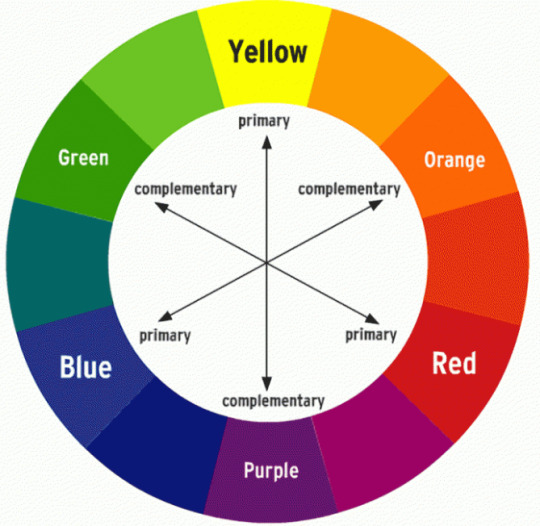
This was also applied to the Green Witch Arc, which in this case was used to replace Little Red Riding Hood

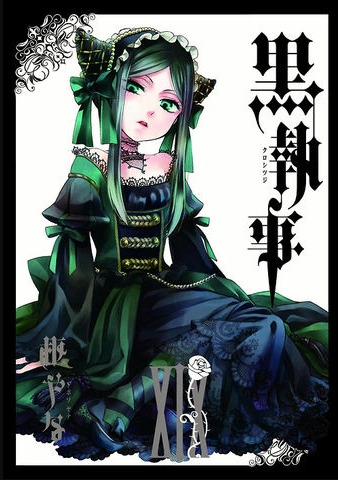
So, what else does this have to do with it?
Well, Arcturus is an ORANGE star
While Sirius is a BLUE star


Yes, the two are complementary colors also the fact O!Ciel is always using Blue...
Evidence 2
I'm not going to deny this one but it's kind of stupid, but it could still be relevant
Did you notice that the name Ciel Phantomhive has the same initials as his grandmother?
C.P.
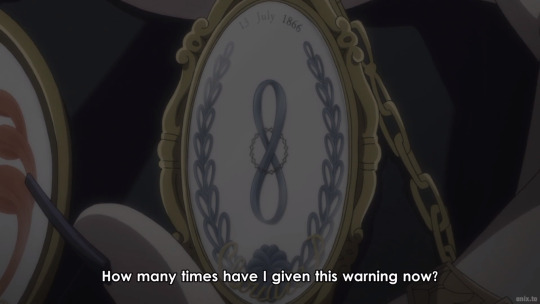

Well, if the name Arcturus Phantomhive has the same initials as if Madame Red had married Vincent
A.P.
And all the evidence points to O!Ciel being closer to his mother than his father…
You understand what I meant
#black butler theories#black butler#kuroshitsuji#ciel phantomhive#phantomhive twins#o!ciel#r!ciel#emerald witch#yana toboso#astre phantomhive#sirius phantomhive#weston college arc#black butler season 4#kuroshitpost
90 notes
·
View notes
Text
Guide to Understanding Genocider’s Many Names
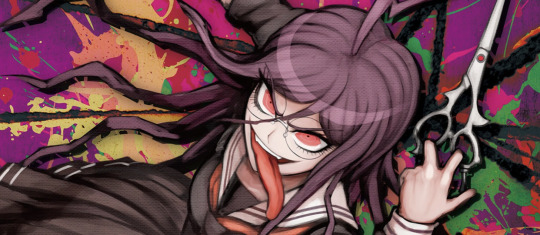
Genocide Jack has many names and it can be hard to understand why so many people use different ones or spell them differently, so I attempted to make a guide that is as comprehensible as possible.
Something to know before hand
Kanji: More complicated, such as 翔
Hiragana: Simple and smooth, such as しょう
Katakana: Simple and sharp, such as ショウ
Let’s get the “Genocide” part out of the way
This part of her name is written in katakana, (ジェノサイダー) and you’ll notice the line at the end. This means the sound is extended, so instead of “da” it’s “dā”. Japanese doesn’t have an “er” so this is used instead, since they sound similar. Her official title is Genocider. The localization simply switched this is be Genocide. I’m not sure why, maybe since Genocider isn’t actually a word, but that’s just my best guess.
Syo VS Sho
Here’s where it get complicated.
In order to make sounds like ���kyo”, “bya”, or “ju”, two hiragana are need. First, a character ending in i, such as ki, bi, or ji, characters pronounced like ka or bu cannot be used. Second, one of the three y’s (ya, yo, or yu) in a smaller form.
The character “ki” (き), combined with “yo” (よ), would make “kiyo”. But if the “yo” is written smaller (よ→ょ) then the “i” from the first hiragana is replaced by it. So since きよ is Kiyo, きょ is Kyo. Same for “bya”. びや is Biya, so びゃ is Bya.
Now, we have our “exceptions”, shi (し) and ji (じ). You’ll notice they look very similar, which is why they are both “exceptions”. For “ji” (じ) and “yu”, (ゆ) rather than jyu it’s just ju (じゅ). It’s different since in the case of kyo and ko, it’s a whole other sound, but jyu and ju are pronounced the same, so the y isn’t needed.
But in all my examples, you’ll notice the first hiragana is two letters, which is why it gets tricky for “shi”. Like jyu, shyo is unnecessary, however, h and y are pronounced the same here, so you can remove either one and get the same sound.
Quick Note: I used “kyo”, “bya”, and “ju” as examples since there are Danganronpa characters with those in their names, but, just to clarify, they aren’t the only combinations possible.
The reason I put exceptions in quotes is because this is romanization, there is no rule book saying you must write it this way. While Sho is the most common way to write this, it doesn’t mean Syo is wrong. In fact, the games themselves use this.
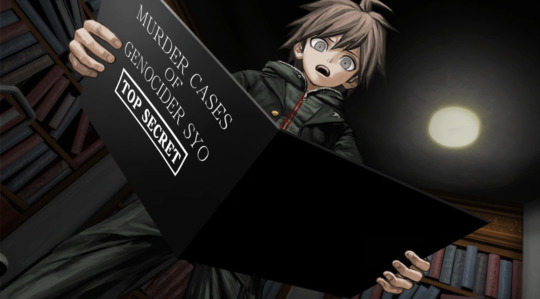
However, they also use Sho.

So, really, both are correct.
Syou VS Syo / Shou Vs Sho
> I’ll be calling her Sho/Shou here for convenience.
翔 should be spelt with a “u”, since it’s しょ“sho” then う “u”, so “shou”. Still, a lot of times the u is excluded because it doesn’t sound too different in English. English speakers pronounce “Shuuichi” and “Shuichi” the same, so I suppose the u is unnecessary. You’ll find this is common in a lot of different translations. Even Japanese media that use the alphabet, like the pictures above, will sometimes leave out the u, if following an o or another u.
Jack & Jill
These are just the titles that are strictly English. Since the whole thing about Syo in the beginning was that she’s a serial killer, society will assume it’s a man, so the public will give her a masculine name. In English, people will hear Sho and see it’s foreign, so there’s no gender association. I think it was changed that way so we’d see it as masculine. While I think they should’ve kept her Japanese name like everyone else in the game, I cannot deny how easily Genocide Jack rolls off the tongue.
Overall
All the names work, use whatever you want.
I hope this made sense to at least one person. If it doesn’t, feel free to ask for further clarification!
#danganronpa#genocide jack#genocider syo#genocide jill#genocider sho#praying I didn’t misspell anything
83 notes
·
View notes
Text
Notes on ひらがな 📚✨️

Disclaimer: I haven't been posting a lot lately (life's been hectic) so I decided to start sharing some of my notes. These were taken a while back, based on Tae Kim's grammar guide.
Japanese consists of two phonetic scripts (Hiragana and Katakana, referred to as kana), with a little less than 50 characters each. Today we'll study Hiragana!
Hiragana (ひらがな) is used for a couple of reasons:
• Grammatical purposes;
• Words with really difficult/rare Kanji;
• Colloquial expressions;
• Onomatopoeias;
• Or by beginner students and children, in place of unfamiliar Kanji;
Every character in Hiragana corresponds to a [vowel] or [consonant + vowel] syllable sound, with the exception of [ん].
When practicing by hand, it's extremely important to remember that stroke order and the direction of strokes matter a lot! You don’t want to end up with the writing skills of a clumsy toddler.
(the chart bellow has hiragana and katakana btw, the hiragana characters are on the left side)

source: r/japaneseresources on reddit
Thought learning all the characters was hard enough? Fear not, there's additional sounds for you to learn.
📚 The Muddied Sounds 📚
There are five more consonant sounds that are written by affixing two tiny lines (dakuten) or a tiny circle (handakuten) to a character. This creates a less clipped version of the consonants, as you can see bellow:

source: japanistry.com
📚 The Small [や], [ゆ] and [よ] 📚
We can combine a consonant with a / ya / yu / yo sound by attaching a small [や], [ゆ] or [よ] to the /i/ vowel character of each consonant.

source: guidetojapanese.org
📚 The Small [つ] 📚
A small [つ] is inserted between characters to carry the consonant sound of the second character to the end of the first.
Note that when you encounter a small [つ] between characters, there's almost always a clipping sound to the pronounciation! You gotta make sure to clip the right consonant (the consonant of the second character).
Example: ざっし (zas-shi / magazine)
📚 The Long Vowel Sound 📚
You can extend the vowel sound of a character by adding [あ], [い] or [う] to them. See the chart bellow:

source: guidetojapanese.org
Example: to create a extended vowel sound from [か], we add a [あ] to create [かあ].
Remember to actually hold your vowels long enough, or you'll end up saying stuff like [ここ - here] instead of [こうこう - highschool].
Lastly, there are a few exceptions where and /e/ vowel is extended by adding [え] or and /o/ vowel is extended by adding [お], but those are few and far between, so pay attention but don't worry too much about it.
Example: おねえさん (older sister)
See you next time! 💌
#laura learns#laura studies#japanese langblr#japanese#japanese notes#hiragana#studyblr#student life#study blog#studyinspo#langblr#learning japanese#japanese learning#japanese studies#japanese resources
53 notes
·
View notes
Note
YOU SPEAK JAPANESE AND CHINESE?!?! OMG THATS SO COOL CHINESE IS SO HARD WITH SO MANY CHARACTERS EVEN BEING ABLE TO SPEAK A LITTLE BIT IS A TALENT
Personally, I feel like learning not Japanese and Chinese is hard because there’s similar characters (ig that makes it easier) but there’s some distinct difference and it’s so hard to remember which is which
also can you share tips on learning othe rlamguages? If you want to, of course<3
HAHAHSAH YES I DO!!! im chinese so i already know the lang by heart, but as for japanese, i had to stop learning for a while due to tuition fee restrictions. i can’t really afford online textbooks or tutors anym either, so my advice might not be the best. 😭
ADVICE UTC!
but yes i get what you mean by the confusion!! since jp borrowed a lot of cn characters aka kanji, some words look the same but have totally different meanings or pronunciations, as a native cn speaker it tilted me sm at first (tbh, still does LOL)
first you need to know abt kunyomi (jp vers of pronounciation) and onyomi (the original cn pronunciation), you can skim thru this website for a better understanding, and the rest is js memorization thru familiarity.
and sure, maybe, usually, if you're familiar with cn, you can somewhat guess the meaning of kanji.
i.e. 行程 in jp n cn both means distance / journey, but r pronounced differently (jp: こうてい and cn: xíngchéng)
OR
a more common example, 水 (jp: みず / cn: shuǐ) diff pronunciations but both means water.
ON THE OTHER HAND,
手紙 in jp means letter, but in cn it means toilet paper (lmaoo)
i guess its all based on context!! the more u read = the easier it becomes to recognize when to use which reading!
NOW FOR TIPS...
id say find a media you genuinely enjoy and immerse yourself in it.
passion for the language makes the learning process much more enjoyable (and less of a chore). for example, in hsr i switch my game lang to jp 2 help me get used to the tone. another great idea is to try reading jp visual novels as it helps w conversational japanese. basically, the more exposure you get to the language in a fun n engaging way, the more naturally you'll start picking up vocabulary, sentence structures, and pronunciation!
2ndly, practice makes perfect. just 5-10mins/day will do, i strongly recommend this guide n this practice website + ANKI DECKS!!! js rmbr, short, daily practice >> long cram sessions. have a dictionary + textbook, u can find many good ones online, if not, reddit is ur next best choice (r/learnjapanese)
ALSO, before diving into kanji, make sure you’re comfortable with hiragana n katakana first, they're pretty much the foundation of reading n writing in jp!!
-
AS FOR CHINESE: disclaimer, as a native, i have never truly "learnt" chinese from the basics b4; but here r some tips i often give my non-native irls that helps
get to know hanyu pinyin first (aka romanized cn) this helps u to look up words more easily on your device n pronounce them correctly.
in cn, there's this thing called 翘舌音, which refers to retroflex sounds. (e.g. the way u wld pronounce "sha" and "sa" is diff) this big difference in pronunciation changes the meaning of the word.
找 (zhǎo) = look for 早 (zǎo) = early / morning
2. learn the tones. like retroflex sounds, tones can completely change the meaning of the word too.
mā (妈) = mom má (麻) = hemp mǎ (马) = horse mà (骂) = scold
can't tell the difference and don't have a native speaker around u? USE GOOGLE TRANSLATE. simply copy paste the word / phrase u wanna hear n press the listen button n it'll read it out for u (unf if u tl longer sentences, it may sound robotic, well because.. it is a robot.)
3. chinese has many homophones, so you can’t just rely on pinyin, you need to listen + read to understand words in context.
i.e. 给予 where 给 is usually pronounced gěi, but in this context, 给 is pronounced as jǐ
PRO TIP: if u have a cn keyboard, it'll usually tell u the correct pronunciation

no.2 in brackets, it auto detects what i should've typed instead!!
4. likewise in jp n other langs, consuming cn media will greatly help in ur learning progress + PRACTICE!!
5. just like how in english we don’t go around saying things like “whom do you wish to speak with?” in daily conversation; in chinese, people don’t use overly formal textbook phrases either.
textbooks teach polite and grammatically correct chinese, but if you want to sound natural, it’s better to learn how native speakers actually talk —either through dramas, social media, or getting used to it js by changing ur in-game lang to cn.
last but not least, have fun!! if you force urself to memorize endless vocabulary lists or study only through textbooks, you’ll burn out fast. SO TAKE A BREAK IF U HAVE TO, AND ENJOY THE PROCESS ^^
#✧renanswers#SORRY I YAPPED#if u have any questions (REGARDING CN) feel free to drop by my inbox again!! ill try 2 answer them to the best of my abilities#advice#chinese#japanese#ALSO RMBR TO REWARD URSELF WHENEVER U HIT A GOAL!! RLLY HELPS W MOTIVATING URSELF :3#good luck ^^
17 notes
·
View notes
Text

Hello Hello!
I've been seeing a few posts about people not knowing what to do after doing hiragana, katakana and some kanji, so I'm going to give some of the things that gave me a guideline to work with!
First off is Tofugu!
Tofugu has a lot of resources and even their own podcast you can listen to, where they talk about experiences (like the jet program), along with words and grammar, when to use them and what to use instead!
But what I'm focusing on is their ridiculously detailed guide to learning japanese! go have a read if your struggling! like they say "raise the floor before you raise the roof!"
Next is Renshuu!
Renshuu has decks you can choose from, be it genki vocab to grammar or N5 and up! they do have decks they recommend at the beginning like Japanese basics which they call N6. (don't be like me and skip it if your a beginner. I went straight to N5 but I'm struggling with the grammar since they are using words i skipped.)
They also have a leveling system where you can evolve your own renshuu for every few levels you've passed! there are also crosswords, mini games and more to make learning japanese more enjoyable!
If anyone has other things they want to add feel free to do so!
#japanese langblr#japanese studyblr#japanese#Tofugu#Renshuu#these are my main things i use#of course i have the genki textbooks as well but i only use them to test myself and to see how much i know
48 notes
·
View notes